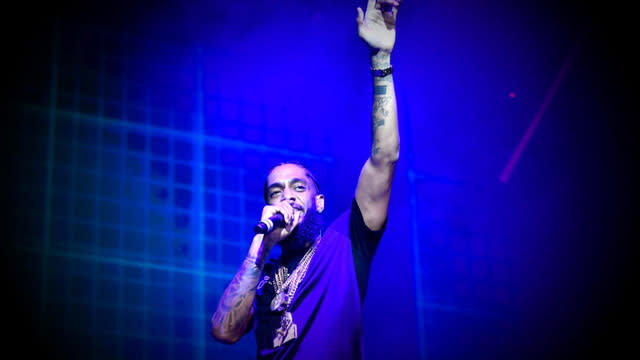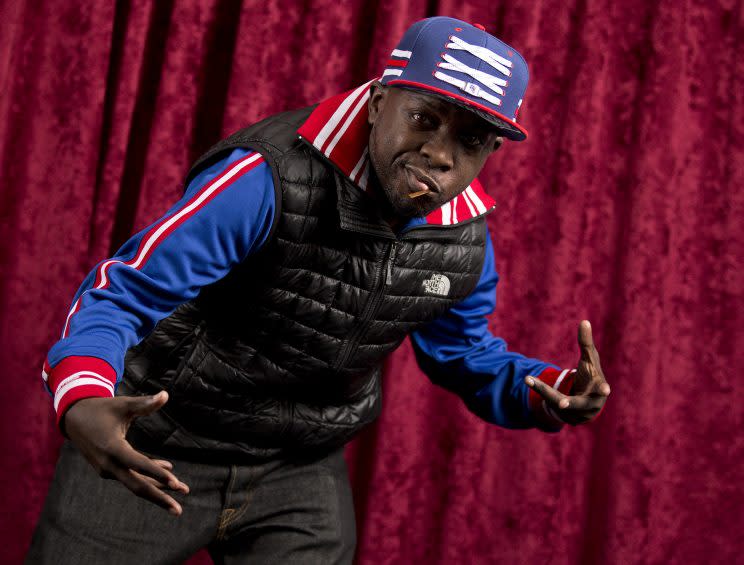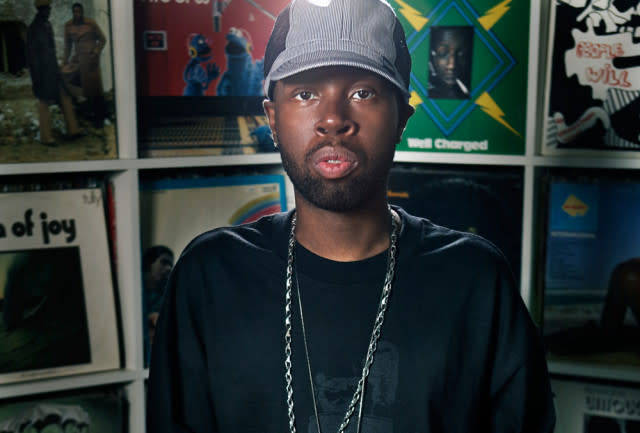R.I.P. Nipsey Hussle, another of our favorite rappers gone far too young
Music fans are still reeling in the wake of Sunday’s fatal shooting of Nipsey Hussle, the Grammy-nominated hip-hop artist who was gunned down in South Los Angeles by a man over an apparent personal dispute. (The suspect is in police custody.) Rihanna, Chance the Rapper, LeBron James and Ava DuVernay are only a few of the notable folks who’ve expressed shock and grief over the killing. Beyond his recording output, Hussle was known as a beacon of light in his community. He owned several businesses in L.A.’s Crenshaw District and, according to the Los Angeles Times, was known to employ struggling residents, many homeless, and once gave a pair of shoes to every student at a nearby elementary school.

Hussle, born Ermias Asghedom in 1985, was only 33.
It would be disingenuous in this space to attempt to capsulate Hussle’s legacy as a performer. I’ll leave that to worthier tributes from AllHipHop.com and Okayplayer. I was only marginally aware of Hussle’s music (I should’ve listened to Talib Kweli, instead I slept on Nipsey) as a stubborn hip-hop head still loyal to “The Golden Era” sounds of the ’80s and ’90s and resistant to give in to the contemporary stylings of trap music. You know how they say the music we listen to in our teens will never be topped in our minds? Couldn’t be truer.
But I can relate to the anguish endured by Hussle’s fans. I’m still aching from the 2016 death of Phife Dawg, 45 years young when he succumbed to a long battle with diabetes. A Tribe Called Quest was my Beatles, so losing Phife was equivalent to losing John Lennon. Before him, it was MCA (47), one-third of the legendary Beastie Boys posse. Before him, Gangstarr frontman Guru (48). Before him, the influential Detroit producer J Dilla (32). Before him, Run-DMC DJ-producer Jam Master Jay (37). Before him, two of the greatest who ever lived — and who will forever be linked in their deaths — The Notorious B.I.G. (24) and Tupac Shakur (25). And there were many more.
All brilliant musical minds gone before they reached the age of 50, many before 40. Some before 30.

And that’s one of the most difficult, most disheartening aspects of hip-hop fandom. Yes, musicians in general tend to live harder and die younger. There are too many to list, but we need look no further than the infamous “27 Club” (Jim Morrison, Jimi Hendrix, Janis Joplin, Kurt Cobain, Amy Winehouse). But among the subset of hip-hop artists, life expectancy is disproportionately lower.
Violence is one factor. Many rap artists grow up in inner-city areas that, as a product of the systemic racism that’s ailed this country since its inception, are plagued by rampant poverty, crime and drug abuse and lack quality educational opportunities. It’s a fair criticism to say some rap music can glorify violence, but even as certain hip-hop artists gain money and fame, their hard-scrabble backgrounds (and the people they’ve always been surrounded by, for better or worse) follow them.
Hip-hop has been losing artists to gun violence almost as long as the genre has existed, dating back to the 1987 killing of Boogie Down Productions DJ and producer Scott La Rock (25), immortalized by BDP partner-in-rhyme KRS-One in many a classic verse since.
The most infamous murders — those of Biggie and Tupac, which played over a painful six-month stretch from 1996 to 1997 at the height of the “East Coast-West Coast beef” — remain unsolved, never giving fans proper closure and instead spurring more conspiracy theories.
Likewise, the murders of Big L (24) and Jam Master Jay are open cases. Hussle’s slaying, meanwhile, comes only nine months after the murder of Florida rapper XXXTentacion (20).
Drugs have also taken their toll on hip-hop stars, with accidental overdoses having claimed the lives of Mac Miller (26), Pimp C (33), Kriss Kross’s Chris “Mac Daddy” Kelly (34) and Ol’ Dirty Bastard (35).
Health and medical issues, however, have been a silent killer. Pioneering N.W.A. member Eazy-E (31) perished from complications due to AIDS in 1995, but in the last 13 years we’ve seen an irrational number of the genre’s icons fall to various illnesses.

Dilla battled lupus for three years and ultimately succumbed to cardiac arrest. Mobb Deep rapper Prodigy (42) died from complications related to sickle-cell anemia. Both MCA and Guru died after bouts with cancer. Big Pun (28), Nate Dogg (41) and Craig Mack (47) all had heart failure. For MC Breed (37), it was kidney failure. Three 6 Mafia co-founder Lord Infamous (40) died of a heart attack. Heavy D (44) suffered from heart disease and died from a blood clot in his lungs. Like Phife Dog, Tim Dog (46) died from complications related to diabetes.
It’s again an issue that likely results from racial and wealth disparities in America, with life expectancy four years lower for black people than whites, according to the CDC. Neglected neighborhoods rarely offer viable healthcare or affordable healthy food options.
The good news: There’s a quiet movement brewing to promote health and wellness in the hip-hop community, with artists like Jadakiss and Styles P opening up juice bars in impoverished ares of New York City, and others like Jay Z, 50 Cent, Snoop Dogg and RZA publicly advocating lifestyle changes when it comes to what they consume.
With every one of these losses we are served another reminder of the shortness and delicateness of life. And also a reminder to appreciate our favorite artists, whichever genre they reside in, while they’re here.
Death can also lead to discovery. I was never a fan of Mac Miller — again, mainly because as an old-school loyalist, I never gave him a chance — and have since become convinced that his album The Divine Feminine might just be a modern rap masterpiece.
Now it’s time to dig into the work of Nipsey Hussle.
Read more on Yahoo Entertainment:
Want daily pop culture news delivered to your inbox? Sign up here for Yahoo Entertainment & Lifestyle’s newsletter.

